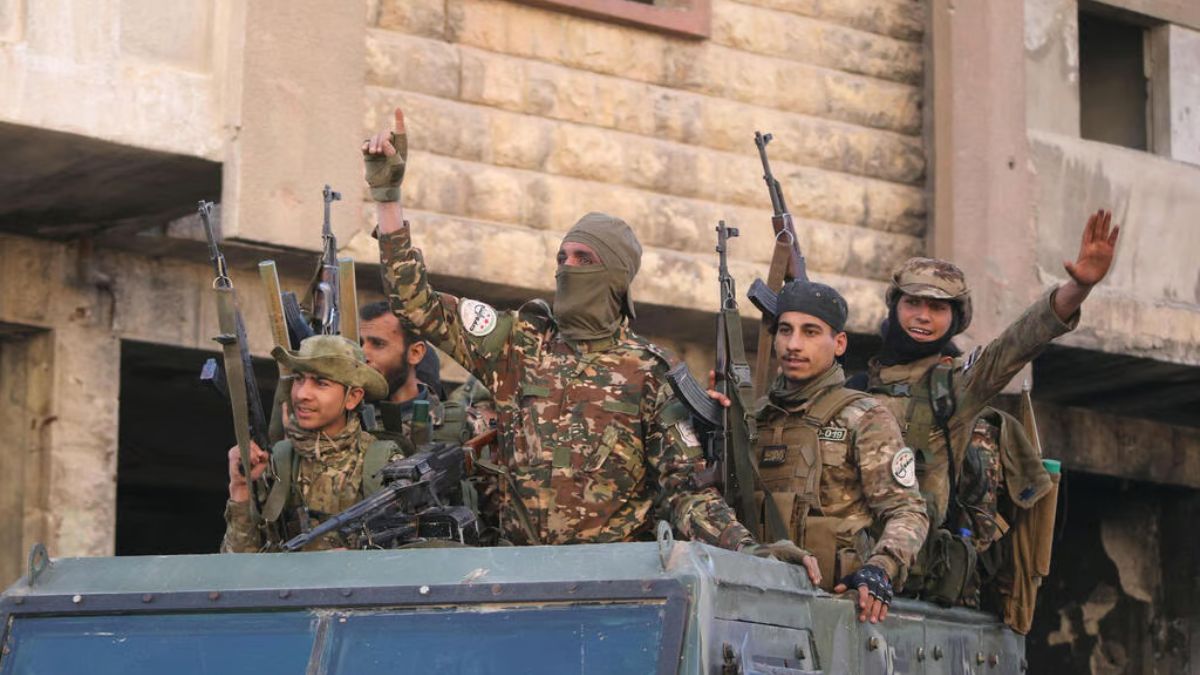Even though President Bashar al-Assad rules Syria, it has long been an open secret that Russian President Vladimir Putin has been the force behind his rule.
In the Syrian Civil War that stemmed from the pro-democracy movement against Assad’s dictatorial regime in 2011, the longtime Syrian dynast was on the backfoot and had lost control of most of his country. The tides began to shift in 2015 when Russia intervened directly in support of Assad. The result was that by the time opposition-supporter Turkey and Assad-supporter Russia reached a ceasefire in 2020, Assad was in control of most of the country.
Now, four years later, as Syrian opposition forces have pushed Assad on the defensive, Russia is also facing the heat as its prestige as well as prized military bases and assets in Syria are under threat.
Russia maintains four military bases in Syria, including the Tartus naval base that’s central to Russian force-projection in the region. The opposition forces are slowly and steadily moving towards Syria’s Mediterranean coast where the Tartus base and the Khmeimim airbase are located. As Russia is distracted with the conflict in Ukraine, the opposition forces are looking to dealing decisive blows to Assad as well as Russia with their latest offensive.
Are Russian bases in Syria in real danger?
The Syrian opposition forces are advancing in a way that they are aiming to cut off Syria’s Mediterranean coast in the west from the rest of the Assad-controlled countries. This is where two of Russia’s most important military facilities in Syria, the Khmeimim airbase in Latakia and naval base in Tartus are located.
The major fighting is currently taking place in the city of Hama, which is around 100 kilometres from the Tartus naval base.
However, there have been reports that some opposition forces have reached as close as 40-56 kms to the Khmeimim airbase.
Impact Shorts
More ShortsWhile it may sound like a lot of distance, the map below helps show that it is not that far and Russian bases are increasingly being cornered.
Writing in The War Zone, Tyler Rogoway noted that while the airbase would not be vacated just like that even if the opposition forces are making rapid progress and the Russian bases are indeed the most protected locations in the entire Syria, the situation is not the same as half a decade back.
Now, most of Russia’s military might is focussed on the war in Ukraine and attention as well as resources are limited in Syria.
“Russian forces are stretched extremely thin at this time due to the ongoing nearly three-year-old war in Ukraine. Early on in that conflict, capabilities were placed in Syria for force protection and contingencies were realigned toward the war effort. This includes tactical airpower that had given the Assad regime the boost it needed to turn the tide of the Civil War. While Russian fighters and attack helicopters are still present at the base and have been active in slowing this current offensive, they are not deployed in the capacity they once were,” noted Rogoway.
Russian and Syrian regime forces would put up a major fight to retain control of these bases, noted Rogoway.
Indicating that the threat may not be only from these bases being overrun by advancing opposition forces, Rogoway noted in his article that as Syrian opposition forces progress, they are bound to come in control of Syrian military’s weaponry, including long-range missiles and rockets, and these weapons could be used to strike Russian facilities.
Is Russia evacuating Tartus naval base?
There are signs that Russia is taking threats from the Syrian opposition forces seriously.
One of the five vessels at the Tartus naval base has been learnt to have left the port on Monday, according to Naval News.
The outlet reported that there are indications that other ships have also left the port, but that cannot be confirmed.
It has also been reported that the movement out of the port at Tartus base is because of a naval exercise but that could very well be a cover to move vessels out of the harm’s way amid the ongoing opposition forces’ offensive.
The Russian Tartus naval base is critical to projecting force at the southern flank of the North Atlantic Treaty Organization (Nato) and supporting Russian adventurism in Africa and West Asia. The base has also supported the Russian war on Ukraine as it has functioned as a node to transfer material from Syria to the war efforts in Ukraine.
)